The coming year is shaping up to be a doozy for digital marketers. A couple of important things are happening all at once. For one, the world is at least trying to put the global pandemic behind us. Business has opened back up and we’re seeing certain sectors, such as healthcare, start to bounce back.
Table of Contents
Here are some data points to give you an idea of what the landscape will look like moving forward:
- 20 percent increase in online spending since January 2020 (McKinsey)
- 30 percent of consumers plan to continue spending on their homes post-pandemic (McKinsey)
- 75 percent of consumers tried new shopping behaviors (McKinsey)
- 27 percent of consumers will spend like they did before COVID (KPMG)
- 55 percent of organizational redesigns are “focused on streamlining roles, supply chains, and workflows to increase efficiency” (Gartner)
- 12 percent increase in digital ad spend during 2020 (CNBC)
- Amazon (10 percent), Facebook (25 percent), and Google (28 percent) are top three in ad market (Wall Street Journal)
Then of course there’s the ever-evolving data and technology landscape. With respect to the former, evolving data privacy regulations will make life interesting for marketers, to say the least. In terms of the latter, the jury’s still out on machine learning and artificial intelligence—at least according to 73 percent of marketers.
So, where should we focus our efforts as we prepare for what promises to be a dynamic new year?
Prepare for Tighter Data Restrictions
Go ahead, utter the phrase “iOS 14 update” in a crowd of marketers and see what happens. With that update, Apple made user permissions gospel, at least on iPhones. If an app wants to collect data on a user, that user will have to approve it. You might be familiar with the iOS 14 pop-up that asks for this permission:
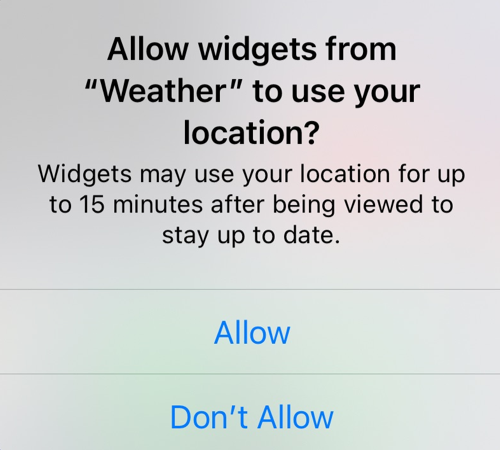
As it turns out, most people reject tracking for mobile apps. Regardless, the iOS 14 leaves digital advertisers who use Facebook, in particular, with an uphill battle in terms of effective advertising. Why?
- New, more stringent prohibitions on data tracking
- Limited ads personalization and reporting
- New configurations and updates needed to avoid major impact
- Ads for iOS 14 devices limited to Auction
- No real-time reporting for iOS 14 campaigns
If nothing else, you can expect to lose more data access. As a result, most marketers are examining the role Facebook will play in their strategy, if at all.
Of course, we’re also keeping an eye on Google Chrome, which plans to phase out browser cookies by 2023. Similar to the iPhone iOS 14 updates, the move to cookieless browsing is meant to give users more control over their data. As such, we predict that protecting user data will become a differentiator that more marketers will embrace.
And there are plenty of ways to advertise effectively without hyper-targeting, for example:
- Audit and adjust your data collection strategy
- Commit to learning the needs of your consumers—that means more research
- Test your ads to see what works and what doesn’t
- Master the art of contextual advertising
- Collect first-party data through call tracking, mobile apps, and other sources
- Integrate your data systems to better use the data you do have
Finally, keep an eye on Facebook and Google. You might have noticed that Facebook rebranded to “Meta,” for dubious reasons. Google is embroiled in antitrust litigation, including a $2.8 billion fine in the E.U. The pressure is definitely on both of these companies to address consumer concerns with respect to privacy, hate speech, data censorship, and so on.
While there’s still much to be sorted, new developments at Facebook and Google will no doubt impact how marketers do their jobs. By keeping abreast of these two giants, you’ll be in a better position to future-proof your marketing strategies.
First-Party Data Might Be Your Best Bet
As the available data continues to shrink, marketers have no choice but to harness first-party data. In 2022, the digital marketing teams that can get a lot more out of the data they already have will gain a considerable edge. So, what is first-party data? First-party data includes information gleaned from:
- Lead generation forms on your website
- Google and Facebook Ads with custom forms
- Chatbots and other messenger bots that collect user information
- People who sign up for your newsletter or mailing list
One of the best ways to use first-party data is to tease out intent.
Let’s take the attendees from your latest webinar, for example. Based on the name, job title, and organization that each attendee provided upon registration, you can build a campaign that provides relevant content and information based on those particular needs.
If the webinar was about using chatbots to improve service experiences, for example, you can reasonably conclude that some of the attendees intend on solving a customer service problem with a chatbot. If most of those attendees are at the director of customer service level or above, you’ll have a better idea of the value they need to see to make a purchase decision.
When users take action and provide information, you can reasonably deduce their intent. This makes it far easier to move those prospects through your marketing funnel, design personalized ad campaigns, or even put certain personas into tailored nurturing sequences.
All of this is possible with first-party data.
“First-party data is essentially an audience that you build yourself. Remarketing, [for example]. That is an audience that you’ve built yourself—you’ve collected those people, you’ve collected those cookies, and now you’re able to target them. Nobody else will have that audience. No one will be able to leverage your remarketing audience to target them. It’s not like your competitors can go out and find your remarketing pool and target them.”
Rich Briddock, SVP Performance Marketing, Cardinal Digital Marketing
Podcast Ep. 36 – HIPAA Compliant Marketing with First-Party Data
How to Capture First-Party Data
You can get a lot of first-party data from the technologies, processes, and channels you’re already using. As to where you send, store, analyze, and leverage that first-party data, here are a few key pieces:
- Customer Relationship Management (CRM)
- Marketing Automation Software
- Data Management Platform (DMP)
- Analytics and Reporting Tools
Make sure you have the integrations in place between various systems so you can extract, share, and act on the insights you need. Many enterprises now use data orchestration solutions that bring all of these technologies and processes together for better decision-making.
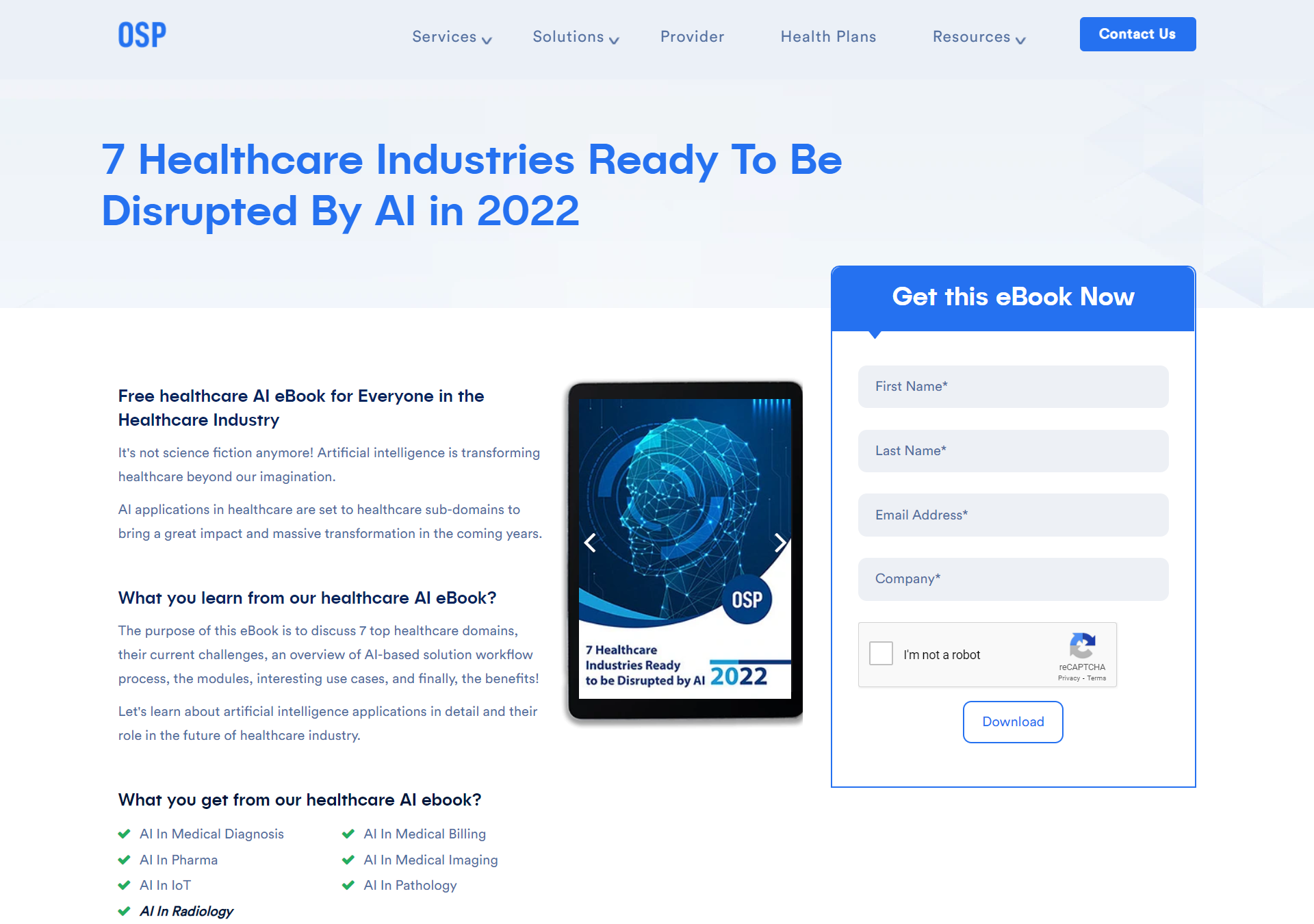
Your Website is a Priority
The global pandemic put digital experiences in the spotlight, for better or worse. While they were on lockdown or working from home, people relied heavily on the internet. All of a sudden, each organization’s website needed to accomplish a lot more than during normal circumstances. Unfortunately, not everyone was up to the challenge.
The fact is, all roads lead to your website. A slow or clunky website is no longer an option. In 2022, you’ll need to prioritize user experience, site speed, and mobile optimization to keep pace. Otherwise, your visitors will just go elsewhere (say, to a competitor who is more serious about their website).
Start with a comprehensive website audit that examines:
- Technical red flags and crawl issues
- Domain authority
- Keyword rankings and traffic
- User experience and information architecture
- Content (top-performing, redundant, unnecessary, outdated)
- Mobile experience and speed scoring
- Online scheduling experience
There’s no harm in taking care of some of the low-hanging fruit. Broken links and redundant content are all too common—cleaning up those two issues alone can help toward a better website experience. Don’t bother investing in top-of-funnel advertising and social media if your website needs a lot of work. Instead, do what you need to so that your site adheres to web, SEO, and UX best practices.
What a Good Website Looks Like
Keep it simple, stupid! While your website directly contributes to SEO, conversions, and so on, it’s ultimately about creating a frictionless experience for your site visitors.
That means a well-organized site structure that guides people to the content they need without too many clicks. It means fast-loading pages that are both rich with valuable information and skimmable. And it means optimizing your entire website for mobile.
Bad Mobile Experiences Will Be Penalized
For at least a few years, mobile optimization was one of those best practices thmany of marketers put off. That’s no longer an option, as Google only crawls the mobile versions of websites. If you don’t have a good experience on mobile browsers, your organic rankings will suffer. As will your user experience. As will many other aspects of your site performance.
According to Google, 79 percent of people are more likely to revisit a mobile site if it’s easy to use. So, be sure to optimize everything for mobile, including your website, digital ads, landing pages, apps and portals, and scheduling experiences. You’re going for responsive design, high page speed, and absolutely no pop-ups or other things that create friction for mobile users.
The first step is to get your baselines. Then, take your site for a spin on your own mobile device. Or perform a comprehensive audit for mobile optimization. It won’t be long before you identify where mobile users might be getting hung up.
“You’re trying to strike that balance now in a mobile-dominated environment because people don’t like to read heavy content on mobile devices. A lot of people are just trying to skim content on their mobile device.”
Rich Briddock, SVP Performance Marketing, Cardinal Digital Marketing
Podcast Ep. 35 – How to Balance UX & SEO in Website Design
This is an excellent segue to our next trend…
The Page Experience Update Lingers On
Not long ago, Google introduced its page experience update. Central to this update are Core Web Vitals—web best practices and recommendations that are baked into Google’s search algorithm. These three core metrics are page load speed, page stability, and speed to page interactivity.
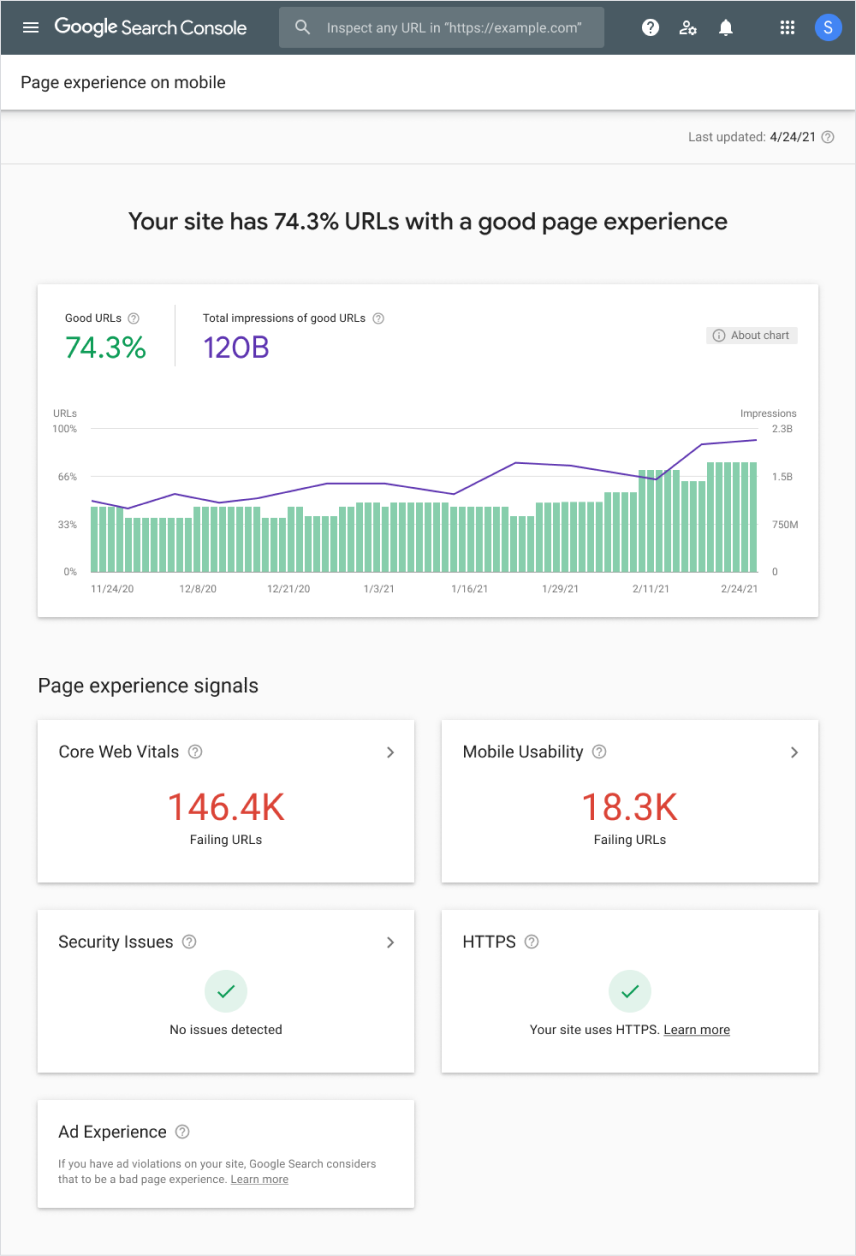
Google originally announced that Core Web Vitals would be a tie-breaking ranking factor that shouldn’t cause any massive shifts in performance. However, they just reversed that statement and reports are showing that the page experience is affecting websites in more noticeable ways than expected.
How to Adapt to the Page Experience Update
Ask any SEO what’s on their mind for 2022, and Core Web Vitals is likely to come up. As Google continues evolving its understanding of language through NLP and algorithmic shifts, it’s important for marketers to continue prioritizing high-quality, natural content rather than keyword-stuff, old-school SEO tactics.
According to Google Search Central, Core Web Vitals focuses on three core areas: loading; visual stability; and interactivity. The Google algorithm considers three metrics to measure each of these areas (which are now ranking factors for SEO):
1. Largest Contentful Paint (LCP)
LCP measures how long it takes for the most important content to load on a web page. LCP is measured in seconds, so you’ll want to at least get in below the 2.5-second threshold (anything more is considered quite poor). You can measure LCP using PageSpeed Insights and the Search Console Core Web Vitals report. Here are four LCP optimizations that will affect your score:
- Server response time
- JavaScript and CSS
- Resource load times
- Client-side rendering
2. Cumulative Layout Shift (CLS)
CLS is used to evaluate page stability. Have you ever visited a page that jumps around as you scroll? This would be an example of page instability that could impact page rankings. Aim for a CLS below 0.1. To optimize for CLS, here are a few things to keep in mind:
- Size dimensions need to be specified for every image and video element on a page
- Ads can precipitate page shifts as well
- Pop-ups tend to cause shifts
3. First Input Delay (FID)
FID measures time to interactivity in milliseconds. How quickly your site visitor can interact with page elements, essentially. To optimize for FID, your web developer will want to reference Optimize FID from Google Developers.
The Evolution of Search
It seems that each year, we’re talking about the next big thing in search. The fact is, Google continues to invest in search technologies, which keeps search evolving pretty fast.
Here’s a few new developments in search that we’re keeping an eye on:
Semantic Search
At its core, semantic search is designed to give people the most relevant search results based on their natural language search terms. Remember all those times you’ve heard someone explain, “how did Google know that’s what I was looking for?”
That’s the power of semantic search.
Relying on a variety of signals and data points, the Google search algorithm is getting better and better at matching people with the information they need. The algorithm now takes into account more than just keywords—it’s factoring in intent, context, and more. It’s a topic we covered in-depth in Understanding the New World of Semantic Search.
Example of Semantic Search in Action
It’s a rudimentary example, but it works. Take a look at what happens when one of our colleagues in San Diego runs a search for “burrito”:
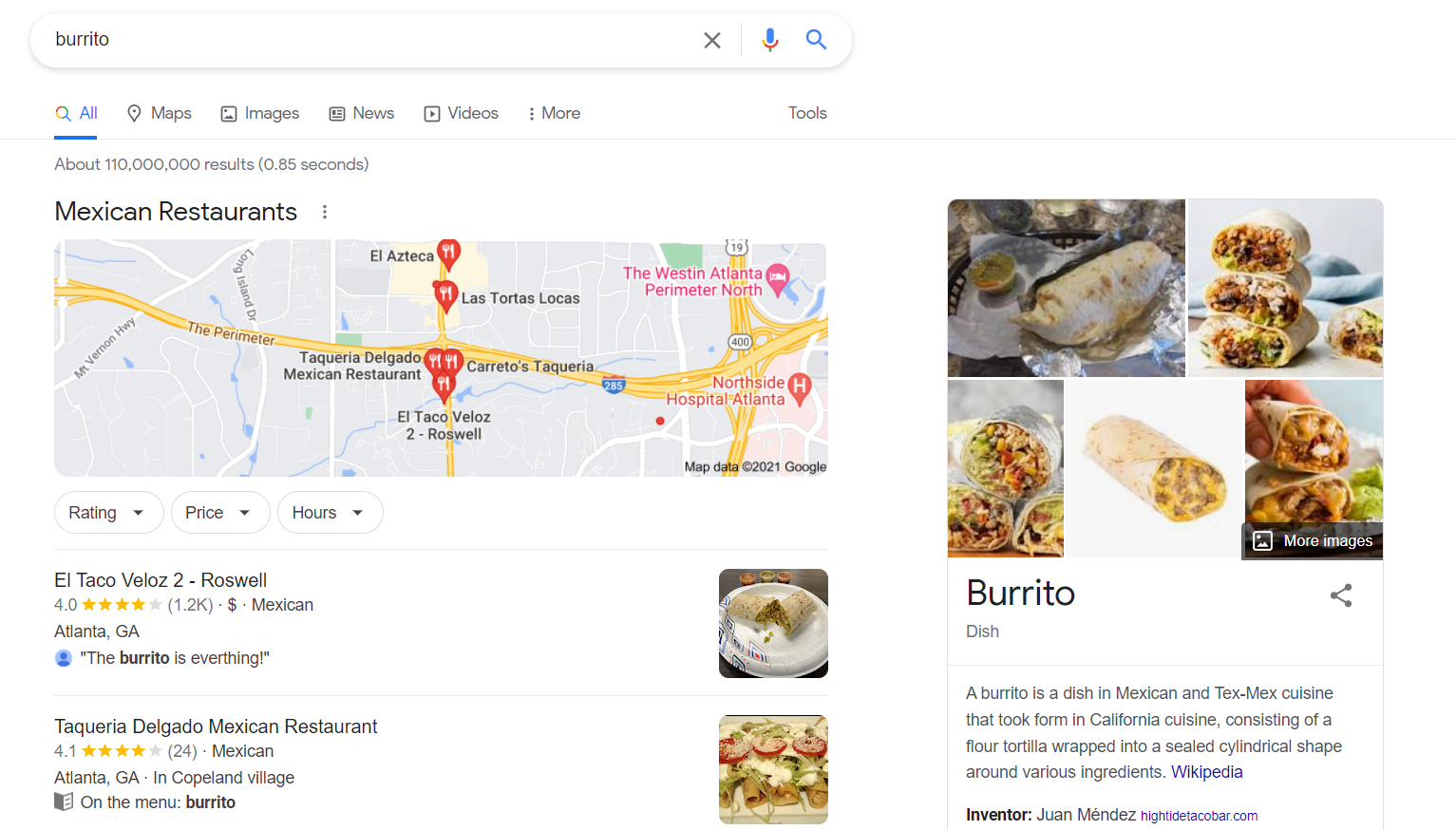
The first thing our colleague sees is nearby options for ordering an actual burrito. Using semantic search capabilities, Google knows that this person likely isn’t looking for a featured snippet that defines what a burrito is; more than likely, they’re looking to eat a delicious burrito ASAP. The algorithm can reach that conclusion instantly, even for very broad terms like “burrito.”
Conversational Search
In conversational search, a person can speak their question or query and have their search results returned to them as dialog. Think of the last conversation you had with Siri, for example. Or any form of conversational AI. Google is bringing this experience to search to be far less query-based.
Example of Conversational Search in Action
To illustrate how this experience works, here’s a screenshot of my searching “what do i do if my toddler climbs out of his crib” using Google Voice search:
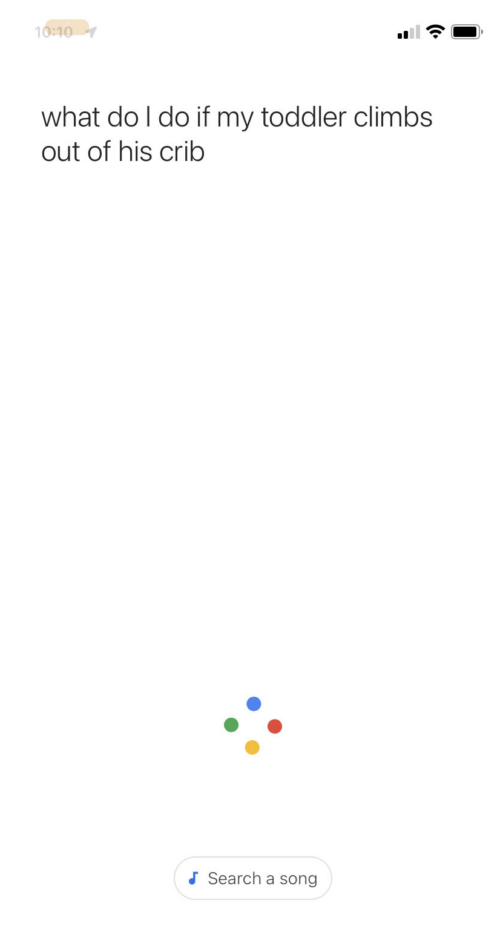
After Google received my query, it actually read the answer to me out loud from the most relevant (or top-ranking) content related to my query. Here’s what the search engine results page looked like while I was listening to the answer:
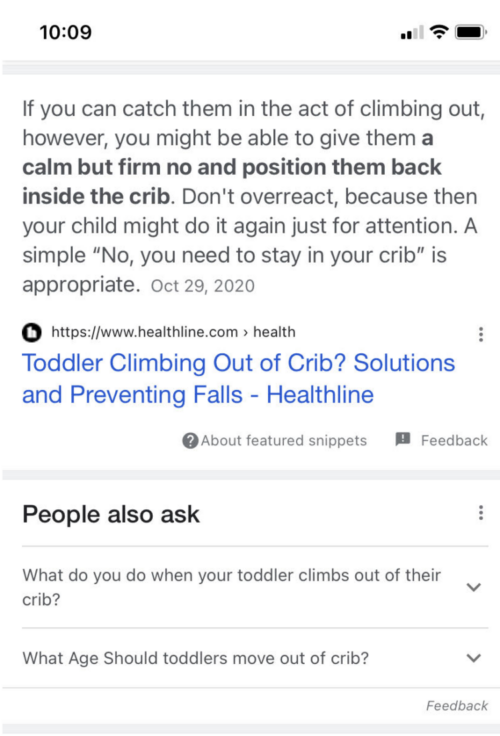
As you can see, Google took my longer-tail, spoken search query and answered it in conversation.
This is much more commonplace now, as the rise of conversational search has given rise to the continual growth of complex, long-tail search queries. Hence Google’s Multitask Unified Model (MUM), which helps artificial intelligence (AI) better understand the question being asked by stringing together complex search queries. With MUM, Google’s AI can quickly understand what people are really searching for (even if they might now know themselves).
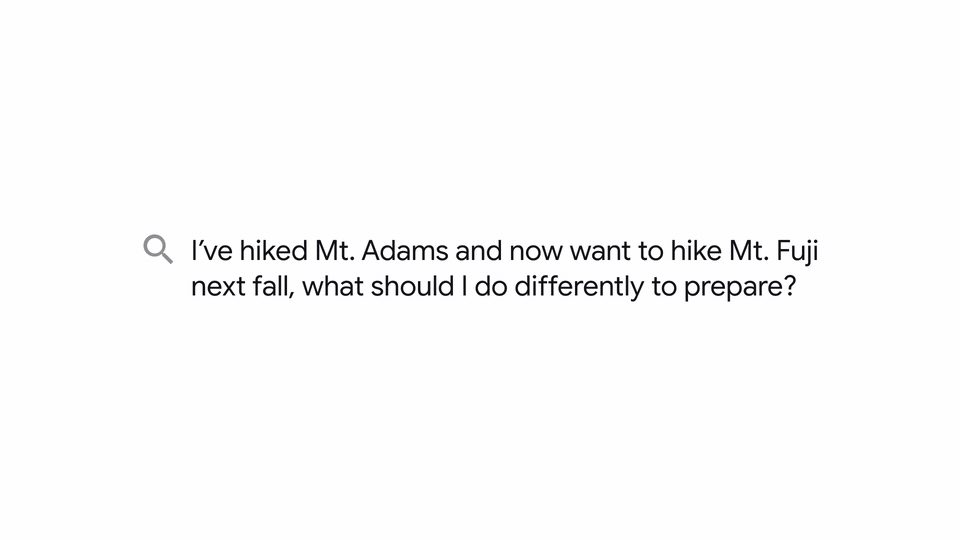
Here are a few things to expect thanks to the advent of MUM:
- A lot better search performance for a lot more languages
- The evolution of image search (snap a photo and ask Google to perform a search based on the photo)
- The ability to provide relevant search results for extra long queries
Now, we’ve known for a while that searches are becoming more and more long-tail. The data shows us that that trend is continuing. If MUM proves successful, we recommend focusing on:
- More specific images that add value to your content
- Unique mid-funnel content for the ~12 percent of searchers looking for something specific
- Annual keyword research to uncover newer trends in various industries or verticals
- Different keyword research tactics that uncover the more particular questions that Google is collecting (that are not in any other keyword research tool
“What we’re noticing in the industry is that keyword research is becoming much more long tail. People are trying to search with more natural language because before Google trained us to search in a very particular way, it sounded like we were almost keyword stuffing a search bar, and committed search in a very specific way to get something. Now we can just type out a full question and get great results. The way they’ve done that is they’ve used something called entities to help deliver better results.”
John McAlpin, SEO Director, Cardinal Digital Marketing
Podcast Ep. 9 – How Consumer Search Behavior is Evolving
Marketing Creative Makes All the Difference
Since when did marketers become such segmentation wonks? Well, it happened: marketers—myself included—became enamored with data and the ability to segment. There was a time when digital advertising was all about segmenting and finding the perfect audience. Now, as that data is threatened and taken away, marketers have to go back to the fundamentals—back to the origins of effective advertising.
In 2022, marketers will need to invest in their ad creative by prioritizing buyer research, copywriting, graphic design, and video production. They’ll need to build a foundation of solid research to understand their target buyers.
- What motivates them?
- What barriers prevent them from taking action?
- What triggers are tied to the buying journey?
The better you get at answering these questions, the better your marketing creative will engage your target audience.
Your Offer Must Be Strong
For advertising to work, you need to have a good offer, and it needs to be reviewed, examined consistently. You can’t use the same ad creative and offer for months on end. Identify what you can offer that your market actually wants that will provide value, including offers along the funnel. The same offer won’t work across the funnel or customer journey. People want different things at different times.
You need transitional offers that share valuable information, especially for high-consideration decisions. You need bottom-of-the-funnel offers, too.
Examples:
- Top-of-funnel offer: Unbiased, non-product-specific, downloadable report
- Middle-of-funnel offer: Educational white paper of case study
- Bottom-of-funnel offer: Industry-specific financial impact/ROI statement/free trial
“Really, you use brand awareness to fill out what product they would be interested in, so you use a lot of different creative in your brand awareness. If you have a whole different product line, you have specific videos for all those products within your brand awareness and you really find what resonates with your user before you target them and your conversion. It’s really about pre-qualifying your users to make sure that you have the highest conversion rate on your bottom line.”
Landon Daugherty, Director of Paid Social, Cardinal Digital Marketing
Podcast Ep. 15 – Facebook Ads: Take Your Social Strategy to the Next Level
Performance-Driven Teams Embrace CRO
More marketers are turning to conversion rate optimization (CRO) to improve their marketing return on investment (ROI). You can use CRO tactics to get more people who visit your site from paid media advertising to convert into revenue-generating outcomes, such as a download, event registration, or appointment request.
With CRO, you’re looking for opportunities to make the journey from click to conversion frictionless. Otherwise, there will be wastage, even for your highest-performing campaigns. That is, ad spend that isn’t yielding cost-efficient conversions. Or non-brand terms that are costing you more than they should.
Let’s say you’re spending $100,000 a month on Facebook Ads. Chances are, there’s a couple of thousand dollars that’s not yielding any real conversions. Why not take that wasted spend and use it to pinpoint exactly where you’re missing the market?
The improvements you make through systematic UX testing and CRO can vastly outweigh potential improvements in media optimizations, especially for mature accounts. CRO can increase conversion rates significantly—I’m talking 100, 200, even 500 percent.
Don’t believe me? According to Adobe, the lift from CRO can be tremendous: “E-mails with a single CTA increased clicks by 371% and sales by 1617%. CTAs on your Facebook page increase click-through rates by 285%. Personalized CTAs work and they can improve your website conversion rate a lot. Also, make sure that you use buttons for your CTAs instead of links.”
Typically, CRO breaks down into two core activities:
- Auditing: Conduct quantitative and qualitative research, form hypotheses, and add to the testing roadmap
- Testing: Run experience through a testing platform, analyze the data, and provide a test wrap-up analysis.
Remember that UX and CRO are closely tied. They’re mutually beneficial in many ways, and strong UX in the following areas inherently supports better conversion rates:
- Mobile optimization
- Social proof and trust signals
- Mapping to each stage of the funnel
- Strong calls to action
- Simple and accessible messaging
- Relevant site navigation and content hierarchies
- Personalization
It’s really a confluence of three things. Design and analytics, like you mentioned, you have to be a numbers person, you have to be data-driven, you have to understand user experience, but really, you have to understand marketing and marketing strategy, and the journey, and what the prospect is trying to do once they reach that page that you’re testing.”
Rich Briddock, VP Paid Media & Analytics, Cardinal Digital Marketing
Podcast Ep. 22 – The CRO Process
Funnel Stages Will Be Far Less Distinct
There’s a knack to understanding what your prospects want at each buying stage. That’s the first step toward building stage-appropriate ads, content, and campaigns. Generally speaking, most marketing funnels break down into four stages:
Problem aware
At this stage, the person knows that they have a need but don’t know much about solutions. They might just be testing the waters, using a search engine to seek out unbiased information that might help and educate them.
Solution aware
At this stage, a person is likely evaluating different solutions to their problem. Some solution-aware consumers just need that one piece of content, validation, or information to click through and potentially make a purchase decision.
Product aware
Here’s where people need some more direct convincing. You’ve got to show them how your solution is better than the competition and overcome objections.
Most aware
A most-aware buyer knows their needs, options, and even competitive differentiators for prospective solutions. They might just need an offer, discount, or incentive to make the final purchase decision.
Now, those are the four basic stages of a marketing funnel in a vacuum. Today, however, the funnel stages continue to blur. It’s non-linear. One step in the funnel doesn’t necessarily follow the next. What you’re really doing is creating lots of good content and campaigns that meet users at their time of need—on their terms. Then, thanks to machine learning, AI can use thousands of signals to determine where to put the next dollar most effectively.
How Artificial Intelligence (AI) Is Reshaping Your Funnel
The growing role that AI has in media placement is a big reason that your top-of-funnel, middle-of-funnel, and bottom-of-funnel content doesn’t matter as much anymore. AI uses 1000s of signals to determine where to put the next marketing dollar most effectively.
PPC
In the PPC world, advertising platforms are increasingly relying on AI and machine learning to serve ads to the right audience, automate bidding, and automate optimizations. Today, you can use AI to target audiences, predict CTR, and select the best ad copy. We rely on AI to automate bid strategies for our clients, optimize ads against revenue goals, and generally reduce cost across the board.
Examples of AI at work include Facebook Multiple Text Options and Google’s Responsive Search Ads (now the default ad type). With these AI-powered options, all you have to do is feed the system variations for headlines and descriptions then let the algorithm do the rest.
SEO
In the SEO world, AI capabilities are now something to optimize for. We’ve already mentioned the rise of semantic and conversational search experiences. New text and voice search experiences are powered by AI, too. These new experiences will require optimizations if you hope to rank content well.
Additionally, many SEOs now rely on AI-powered tools to plan keyword strategy, develop content strategies, and even write the content itself. At the very least, AI can help SEOs improve their decision making in a variety of ways.
The point is, let AI do its work and surface your content at the right stage of the funnel, wherever, whenever, and for whomever. That will leave more space for your teams to find new ways to bring value across the funnel.
“With the onset of responsive search ads, and the fact that we can test headline and description lines dynamically in real-time, what we’re looking at, you’re essentially always in a multivariant test when you’re running paid search. Is it a certain headline that is driving the click-through but maybe once people land there, no one’s taking an action, and then maybe there’s a different headline about, let’s say, insurance, and that is driving maybe a slightly lower click-through rate but everyone who lands on your page is converting from that headline.”
Lauren Leone, VP of Healthcare Marketing, Cardinal Digital Marketing
Podcast Ep. 4 – How To Dominate Google With PPC + SEO
In the End, Marketers Must Do What They Do Best
There was a time when the year 2022 was pure science fiction. Now that it’s here, the year 2022 does feel like the future has arrived. The continued evolution of the internet and technology is now tightly embedded in digital marketing. In keeping up and staying viable, marketers have their hands full (to say the least).
Still, machines cannot replace human ingenuity or creativity. Not yet. And they can’t gain insight into user motivations, challenges, fears, and pain. What about your unique selling proposition—the very essence of what sets you apart in the business world? Are you going to let a machine define that for you?
Not if you want to actually reach people with your marketing strategies.
In 2022 and beyond, what will distinguish advertisers is their ability to gain deep user insights and transform that into a digital marketing experience that people actually want. Will AI and machine learning help in translating those insights into action? Sure—we’ve mentioned a handful of examples of that already.
In the end, though, the only one that can develop the deep empathy you need to be an effective marketer going forward is you.

